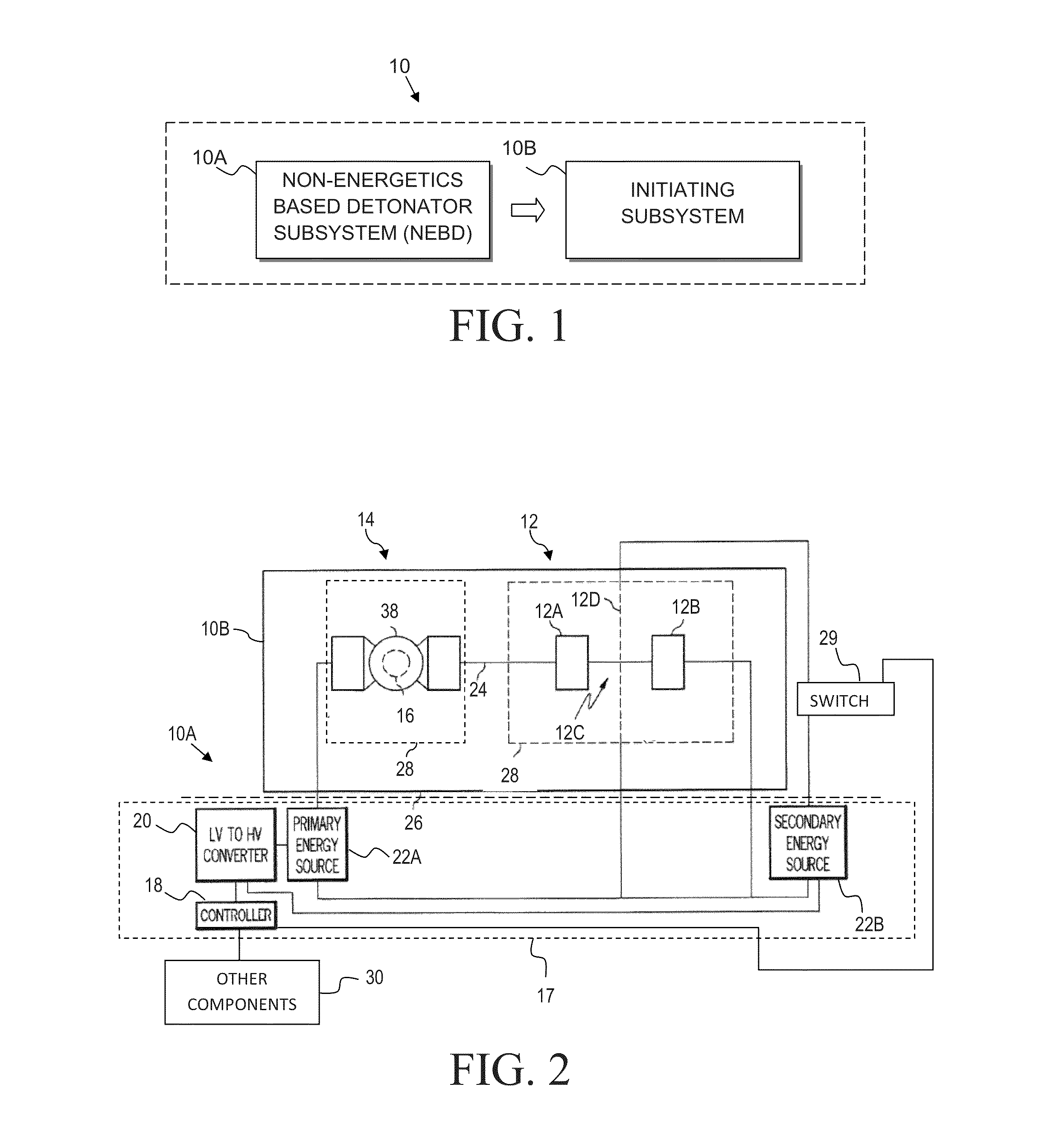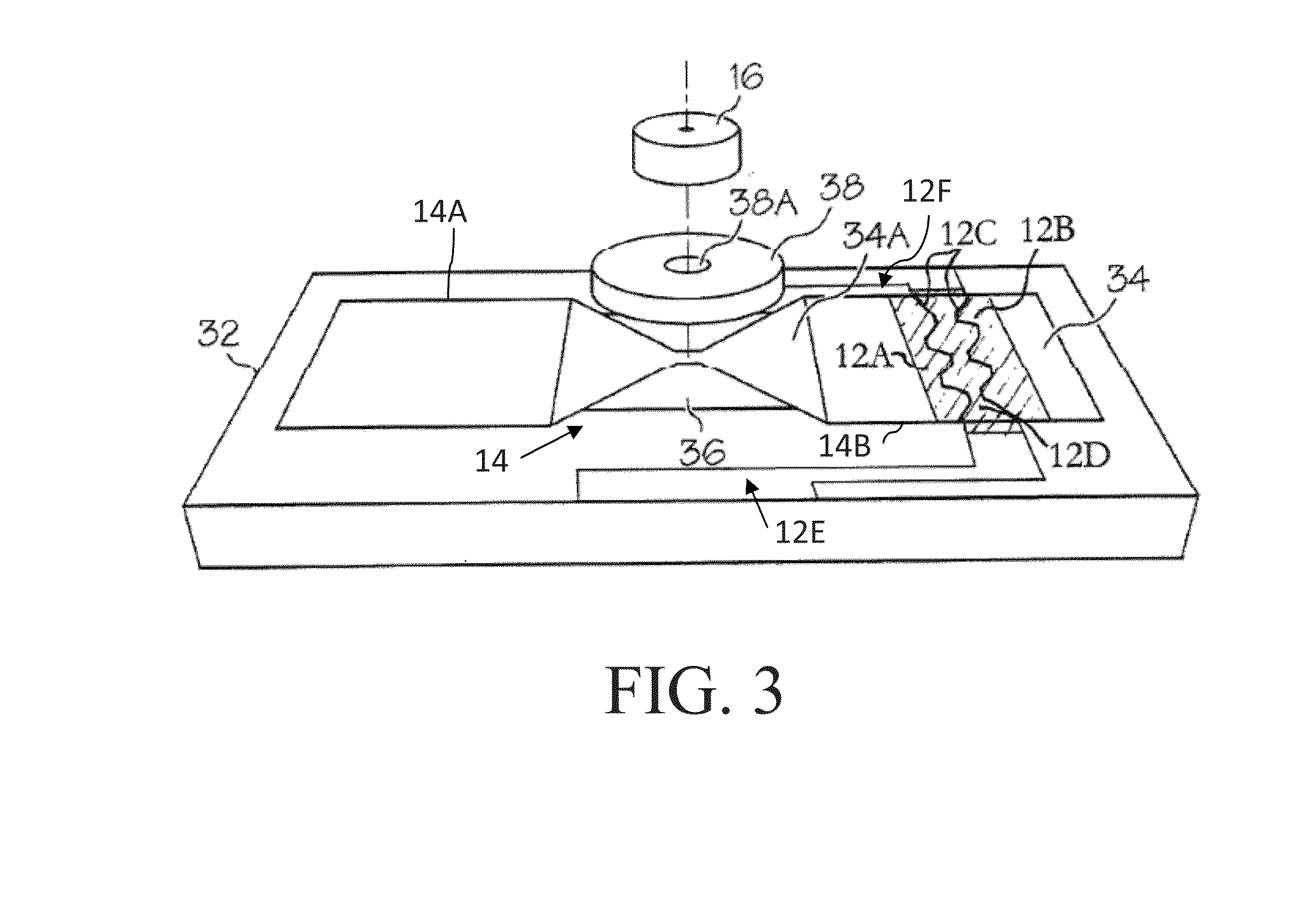Non-energetics based detonator
a non-energetic, detonator technology, applied in the field of detonators, can solve the problems of shock wave, voltage and power requirements to function this type of conventional hot wire igniter, and the heat of the fuse head
- Summary
- Abstract
- Description
- Claims
- Application Information
AI Technical Summary
Benefits of technology
Problems solved by technology
Method used
Image
Examples
Embodiment Construction
[0046]According to various aspects of the present invention, a two-component detonator device for use with explosives comprises two subsystems. A first subsystem functions as a fireset and does not contain any explosives. The second subsystem includes an initiating pellet that is capable of directly firing an insensitive secondary explosive material. Moreover, the two subsystem detonator device may be implemented in “basic” detonator configurations or in “enhanced” detonator configurations, according to various aspects of the present invention, as described more fully herein. The discussion herein with reference to FIGS. 1 through 3 is applicable to both basic and enhanced detonator implementations.
Two-Component Detonator Overview
[0047]Referring now to the drawings and in particular to FIG. 1, a detonator device 10 according to various aspects of the present invention includes two subsystems, including a non-energetics based subsystem 10A (also referred to herein as a non-energetics...
PUM
 Login to View More
Login to View More Abstract
Description
Claims
Application Information
 Login to View More
Login to View More - R&D
- Intellectual Property
- Life Sciences
- Materials
- Tech Scout
- Unparalleled Data Quality
- Higher Quality Content
- 60% Fewer Hallucinations
Browse by: Latest US Patents, China's latest patents, Technical Efficacy Thesaurus, Application Domain, Technology Topic, Popular Technical Reports.
© 2025 PatSnap. All rights reserved.Legal|Privacy policy|Modern Slavery Act Transparency Statement|Sitemap|About US| Contact US: help@patsnap.com



